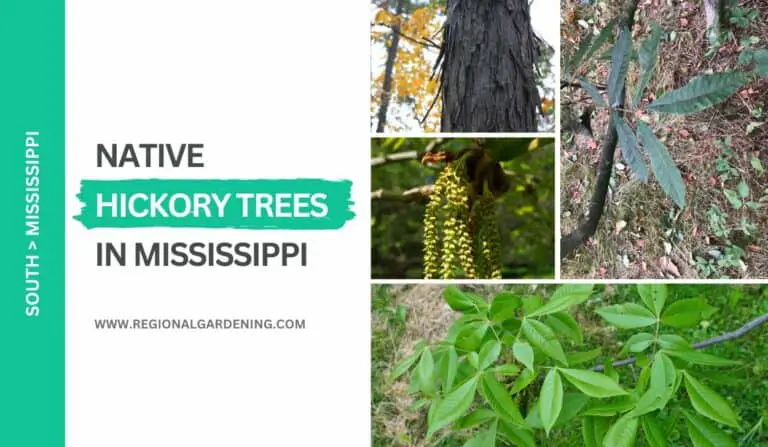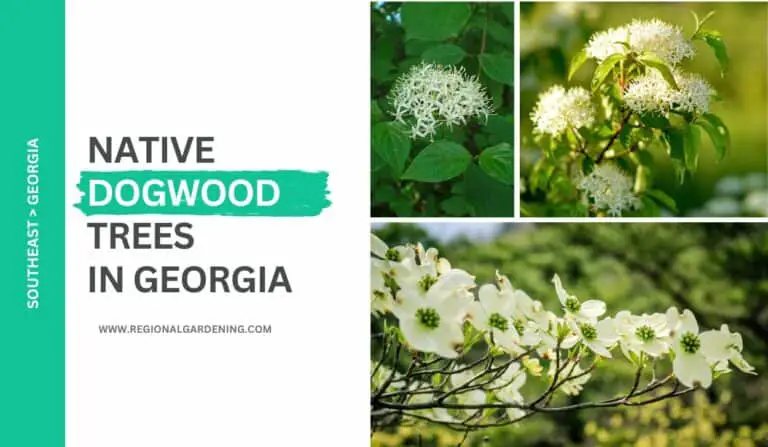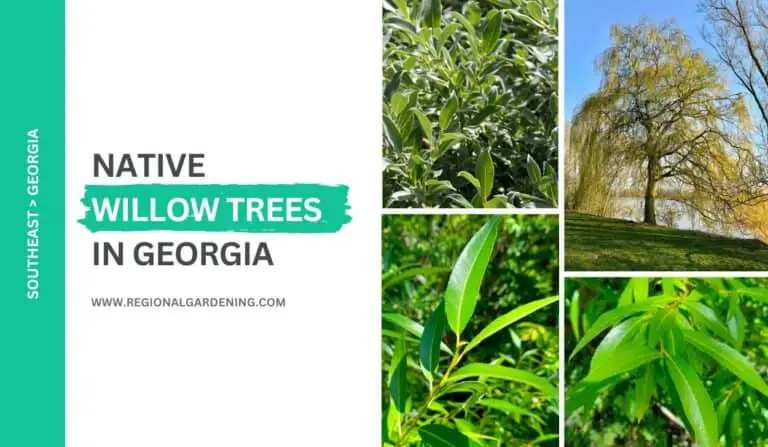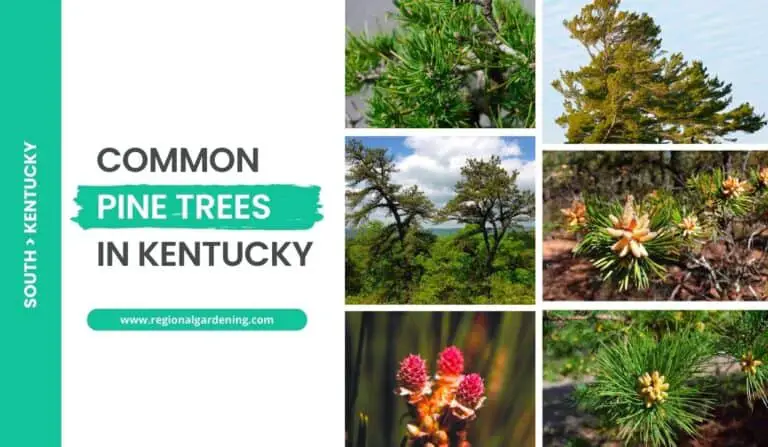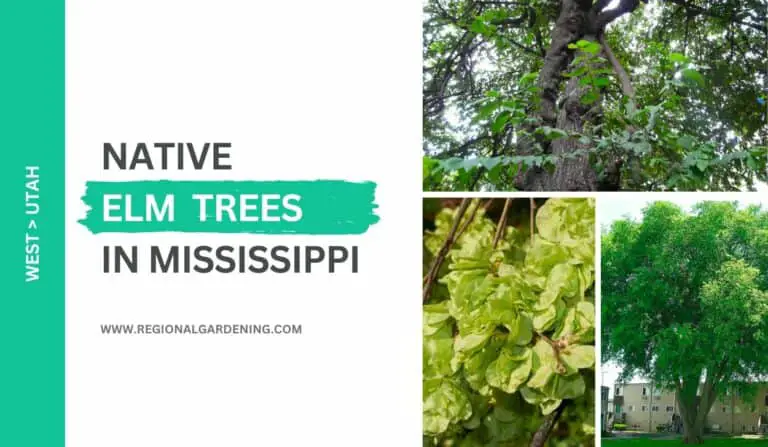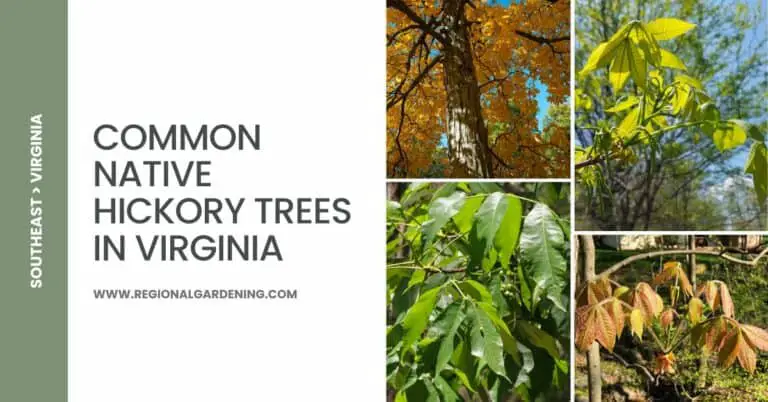Native Maple Trees In Georgia: 7 Types To Know
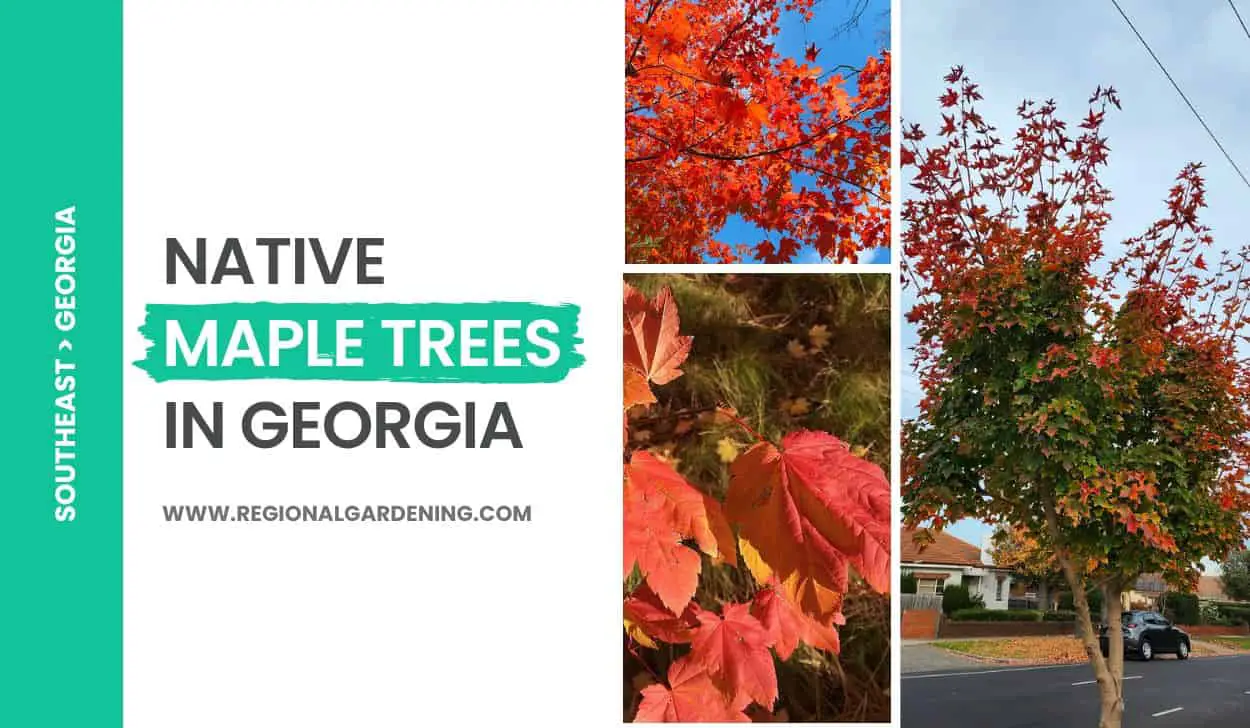
Maple trees are known for their striking beauty and vibrant fall colors. They are common in Northern US, but did you know that there are several native species of maple trees in Georgia?
Well, from the iconic sugar maple to the almost common red maple, these trees add to the rich diversity of Georgia’s forests and landscapes.
In this article, we’ll talk about 7 of the most common native maple trees in Georgia. I’ll show you pictures and give you tips on how to recognize them so you can appreciate and enjoy them on your next encounter.
1. Chalk Maple
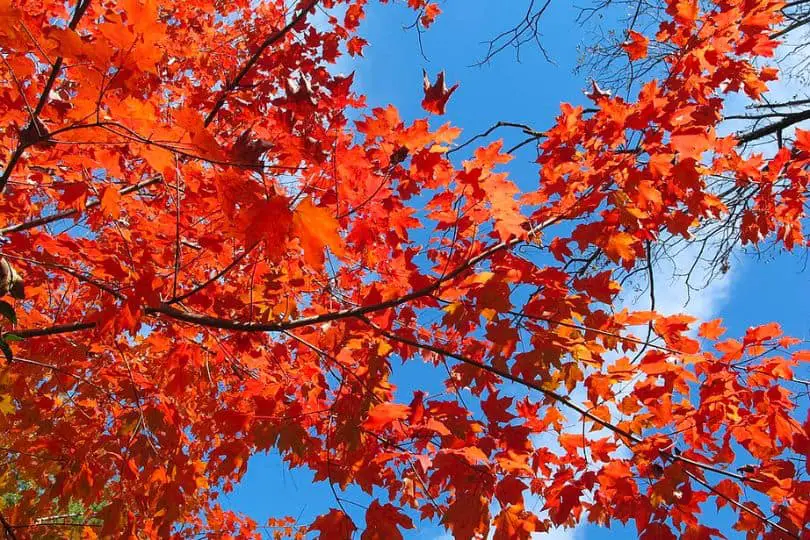
The Chalk Maple, sometimes known as the Whitebark Maple, is a deciduous tree, meaning that it loses its leaves each autumn. In the Piedmont region of the United States, this tree can be found in Richmond, Floyd, Walker, Clarke, and Oglethorpe Counties, and is typical of hilly terrain.
The oppositely-arranged leaves of a Chalk Maple can be up to 3 1/2 inches in diameter and grow on the twig. They have a heart-shaped outline and are deeply divided into three to five lobes. Thin, dark yellow-green, and hairy, the undersides of the leaves are a unique feature of this plant.
The Chalk Maple bears a pair of small, light red-brown, winged seeds that mature in the fall. The wings are about 1/2 to 3/4 inches long.
Young stems of the Chalk Maple are smooth and a pale grey, but the older trunks towards the base darken to an almost black and become heavily furrowed.
Twenty-five feet in height, with a trunk diameter of roughly a meter. In many cases, it doesn’t even reach the size of a shrub and instead tapers off into a tiny, rounded cap.
Chalk Maple trees produce wood that is dense, heavy, and resilient. Yet, because of its little stature, the tree’s wood has minimal commercial value.
2. Florida Maple
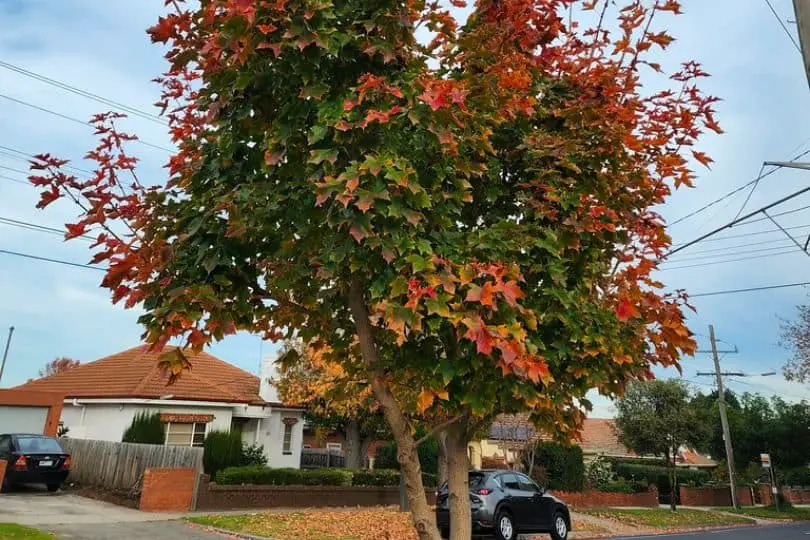
The leaves of the Florida Maple, often known as the Southern Sugar Maple, fall off each year in the fall. Leaves are 1 1/2 to 3 inches in length and width and grow opposite one another on the twig.
They feature 3–5 spherical lobes that are shallowly spaced and dark green and smooth and lustrous on top but pale and hairy on the underside. Typically, the petioles, or leaf stalks, are hairy.
Little green fruit, sometimes slightly hairy, with spreading wings measuring between 3/8 and 3/4 inches in length are produced by the tree.
The tree’s trunk is smooth and white while young, but it darkens and becomes deeply furrowed as it ages. The Florida Maple has the potential to reach heights of 40–50 feet, with a trunk diameter of 1–2 feet and narrow, straight, outwardly-branching limbs.
The Florida Maple is easily recognizable by its 3–5 shallowly spaced, circular lobes on its leaves and its hairy petioles or stems. Heavy, hard, strong, close-grained, and resilient best describe the wood of this tree. It has a reddish undertone and a light brown tint. Florida Maples are beautiful trees, but their wood has very little value.
The Florida Maple is a common shade tree in the state, growing naturally in the low wet woodlands and along riverbanks of the coastal plain and lower piedmont. Its northernmost known range is Clarke and Oglethorpe Counties in Georgia.
3. Red Maple
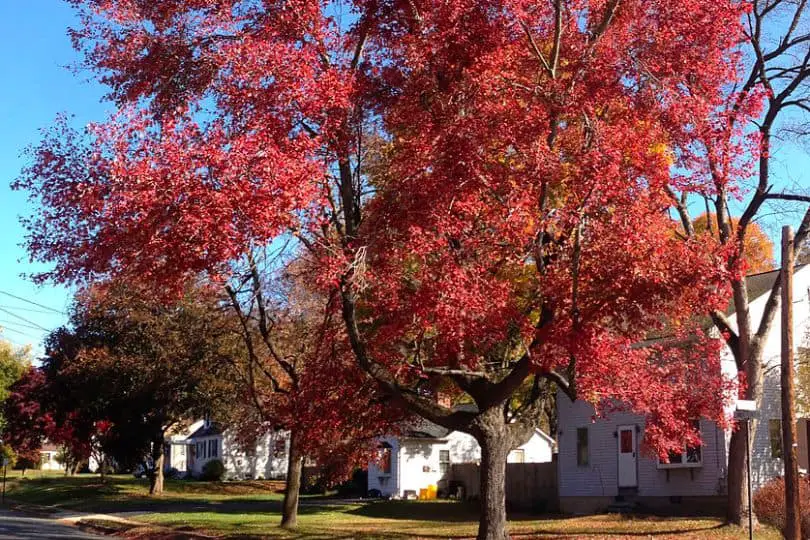
As a deciduous tree, the Red Maple loses its leaves each autumn.
It has opposing leaves that are between 1.5 and 6 inches long and about as broad, and their margins are toothed. The smooth upper side of the leaves is a pale green color, while the smooth or slightly hairy underside contrasts sharply. Red petioles may be seen on the plants.
The tree bears red or pale yellow fruit that is often paired or doubled, with both halves emerging on a single stem that is 3 to 4 inches long. Each seed matures in the spring and features a wing about one inch long.
Newer stems and branches have a pale grey bark, while older trunks peel off in long, narrow scaly plates that are divided by small cracks.
The Red Maple tree has the potential to reach heights of 50–70 feet, with a trunk diameter of 1–2 feet that tapers off at the top into an irregular or spherical head. It has green leaves on top and silvery ones underneath, with toothed lobes and red petioles and twigs that are shiny and odorless and have stubby buds.
The wood from a Red Maple tree is close-grained, robust but brittle, and reasonably hard. It’s a soft maple used for slack cooperage, woodenware, crates, crossties, flooring, veneer, furniture, and more.
The tree is widespread across the state, growing in the lowlands and wetlands of the coastal plain as well as the valleys and hillsides of the piedmont and mountains.
4. Sugar Maple
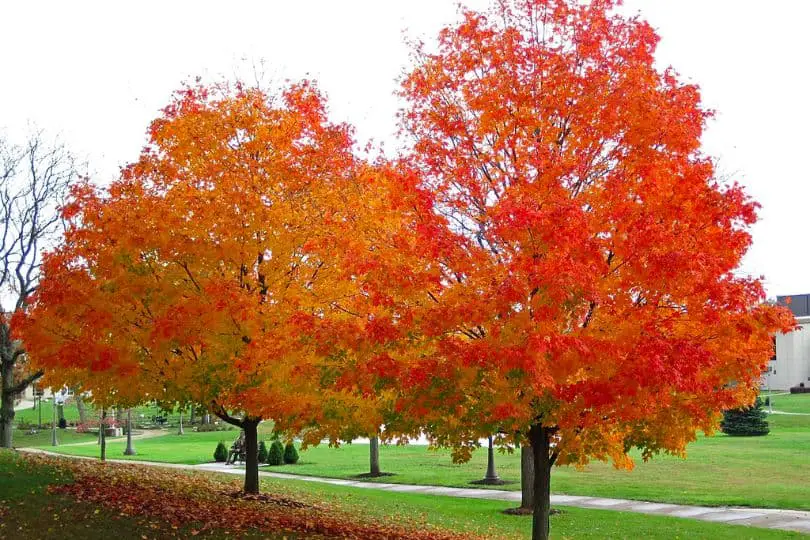
Sugar Maple, also known as Hard Maple or Rock Maple, is a large tree that can grow up to 70 to 100 feet in height and 2 to 3 feet in diameter. It has a dense, oval crown and is typically found on cool slopes with moist, well-drained loamy soils.
The leaves of the Sugar Maple are opposite, simple, 3 to 5 inches long and wide, palmately lobed and veined, with five lobes separated by rounded, shallow sinuses. In the fall, they turn brilliant shades of red, yellow, and orange.
The flowers of the Sugar Maple are light yellow-green, small, and clustered, hanging from a 1 to 3-inch stem and appearing with or slightly before the leaves. The fruit is horseshoe-shaped, 2-winged, 1-inch long, in clusters, and spins like propellers when they fall.
The bark of the Sugar Maple is gray to brown, darker on older trees, developing furrows, with long, thick irregular ridges that curl outward. The twigs are brown, slender, and shiny with lighter pores, and the end buds are brown, very sharp-pointed, with tight scales.
The pale brown or pink wood of the Sugar Maple is hard, heavy, strong, and close-grained. It is commonly used for flooring, furniture, veneer, and novelties. Birds and small mammals eat the seeds, while rabbits, deer, and squirrels browse the twigs.
Sapsuckers ring the tree with holes and return to feed on the sap and insects it attracts. The trees are “tapped” for their sweet sap, which is used to make maple syrup and maple sugar.
5. Striped Maple
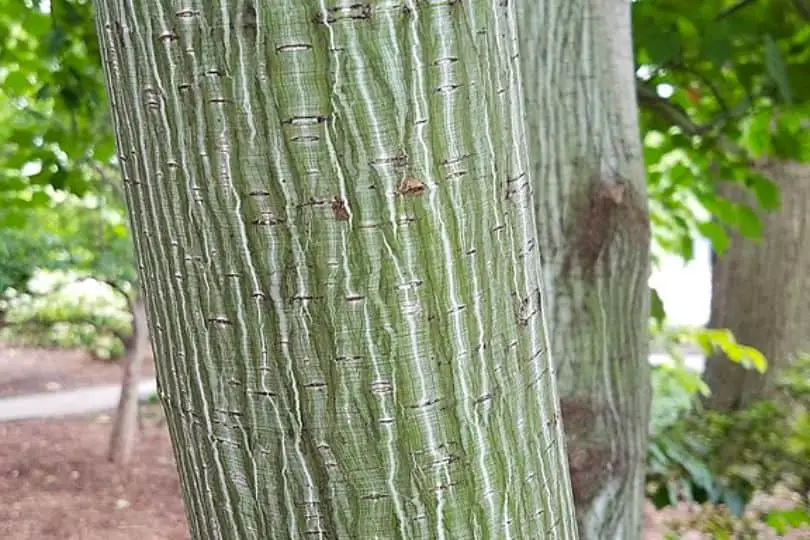
The Striped Maple, also known as Moosewood or Goosefoot Maple, is a small tree or large shrub that grows up to 25 feet in height and 8 inches in diameter.
It is one of the very few native maple trees in Georgia that prefers cool, shady slopes under larger hardwoods and has an open crown.
The 5–8-inch long leaves of the Striped Maple are opposite in arrangement and basic in design. They have 3 lobes like a goose’s foot and are serrated all the way around.
Clusters of yellow-green bell-shaped flowers emerge in late April. Male and female flowers of the Striped Maple grow on different trees due to the species’ dioecious nature. In late summer and early fall, the tree bears fruit that is bilaterally symmetrical, winged, and shallowly V-shaped.
The Striped Maple’s smooth, gray-green bark has distinct white lengthwise stripes while it’s young, and it turns reddish-brown as it ages.
The tree’s twigs are somewhat thick, smooth, and green, eventually turning red or reddish-brown. The crimson buds have a slim egg form and a long stalk, making them look like the beak of a duck.
White and fine-grained, the Striped Maple’s wood is sometimes utilized for inlay despite the tree’s rarity as a source because of its tiny size. Grouse and other birds consume seeds from the tree.
Wildlife including deer, rabbits, and beavers eat tender shoots and bark. Because of its striped bark and ability to tolerate shade, the Striped Maple is sometimes used as an ornamental tree.
6. Silver Maple
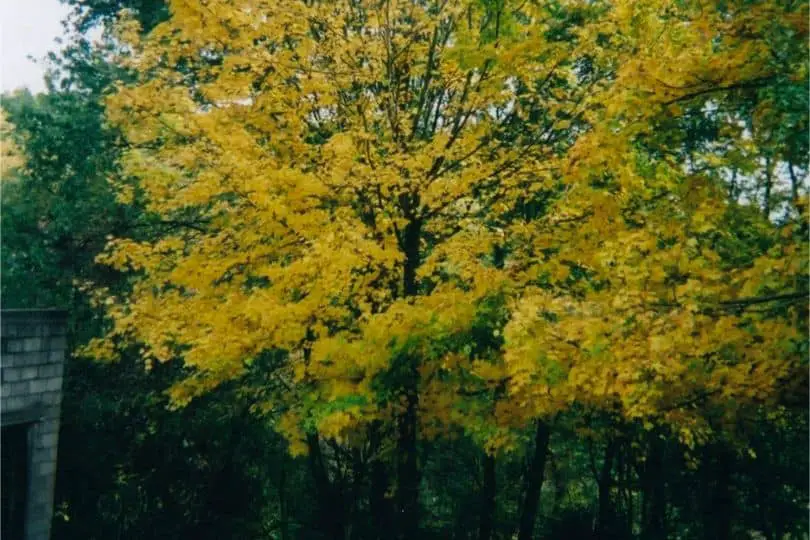
The Silver Maple tree, also known as White Maple or Soft Maple, can reach heights of 50 to 80 feet and diameters of 2 to 3 feet. It has a short trunk that frequently splits into multiple sub-trunks, with branches that sweep downward and curve gently upward. This tree grows well along stream banks, flood plains, and lake shores.
Silver Maple leaves are opposite, simple, 2.5 to 5 inches long, with five primary lobes and deep sinuses. The edges of the lobes are coarsely serrated, and the leaves are light green on top and silvery white beneath. Long before the leaves show, the tree produces greenish to crimson blossoms in dense clusters in early April. The paired, winged fruits are 1.5 to 2.5 inches long and shallowly V-shaped, mature in late spring and spinning as they fall.
When young, the Silver Maple’s bark is light grey and smooth, but as it ages, it splits into long, thin strips that become loose at the ends. When crushed, its twigs are lustrous and reddish to chestnut-brown, with a disagreeable odor. Flower buds are reddish-brown with huge scales and appear in thick clusters.
Silver Maple wood is soft, brittle, weak, and easily worked. It is largely used for boxes, furniture, and fuel, and is frequently cut and sold with Red Maple. The tree can be tapped to make syrup, but it produces less sap than other maples.
The seeds of the Silver Maple, the largest of any native maple, are a vital source of food for many birds and small mammals. In late January, squirrels feed mainly on the buds, while beavers feed on the bark and severed stems.
Because of its beautiful form and gorgeous foliage, Silver Maple is frequently planted as a landscape decorative tree. Yet, if the tree grows near water and sewer lines, its roots can frequently obstruct them.
7. Mountain Maple
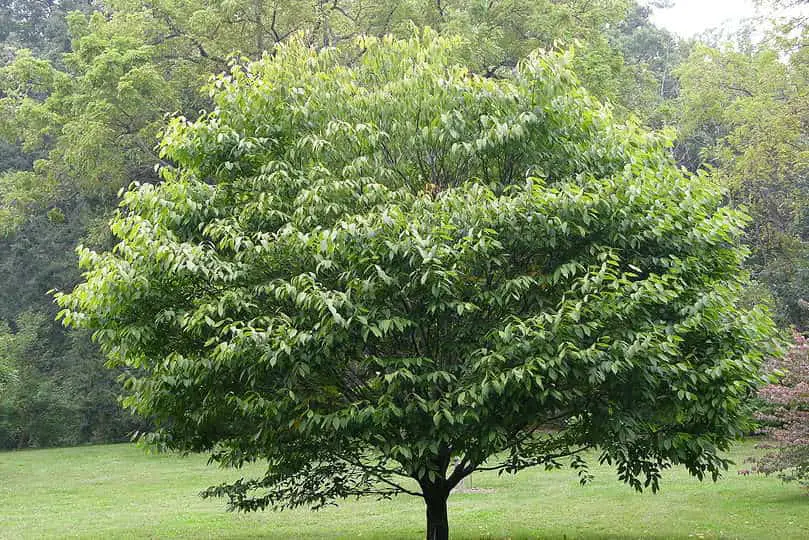
Mountain Maple, commonly known as Acer glabrum, is an erect, single-stemmed shrub or small tree that can reach 4.5 meters (15 feet) in height. It has circular crowns with close-to-the-ground limbs.
The leaves are opposite, simple, 2 to 4 cm (0.75 to 1.5 inch) broad, and deciduous. They have three major and two auxiliary lobes and are green on the upper surface and grey on the lower surface. The lobes are sharp, with serrated borders and lobe sinuses that extend for more than 33% of the lobe’s length.
The inflorescences are spherical clusters of 2 to 10 flowers that bloom when the new leaves grow in May or June. Flowers with greenish-yellow petals may be entire or only have stamens or pistils.
The fruits are hairless yellow or red double samaras with wings that diverge at oblique angles, measuring 1 centimeter (0.4 inches) to 2.5 centimeters (1 inch). Mountain Maple twigs are either red or white.
Mountain maples are often found at high elevations, from the southern Appalachians to the northern part of Georgia.
Native Maple Trees In Georgia – Frequently Asked Questions (FAQs)
Let’s go through some of the most commonly asked questions about maple trees in Georgia.
Will maple trees grow in Georgia?
While maple trees are not as common in Georgia as they are in northern regions, there are a few species of maple trees that can grow in the state. One of the most prevalent is the red maple, which grows well in a variety of soil types and has a brilliant red fall color. Another species capable of growing in Georgia is the sugar maple, which favors cooler weather and may not thrive in the state’s hotter and more humid circumstances.
Even though maple trees are not as common in Georgia as they are in other regions, it is possible to cultivate specific kinds given the proper conditions and care.
What is the most common maple in Georgia?
The most common maple tree in Georgia is the red maple. Other varieties like Chalk Maple, Stripped Maple, Silver Maple, and Sugar Maple are found in certain regions of the state.
Can you get maple syrup from trees in Georgia?
The Sugar maple, which is native to some areas of Georgia, is the best maple variety to get syrup from. They are, however, not as common as they are in the northern states.
Similar Articles
- Native Oak Trees in Georgia
- Native Pine Trees In Georgia
- Native Dogwood Trees In Georgia
- Native Hickory Trees In Georgia
- Native Tupelo Trees In Georgia
- Native Willow Trees In Georgia
- Native Plum Trees In Georgia
- Native Magnolia Trees In Georgia
- Native Ash Trees In Georgia
- Native Elm Trees In Georgia
- Native Cottonwood Trees In Georgia
- Native Cedar Trees In Georgia
- Native Birch Trees In Georgia
- Common Purple Trees In Georgia
- Common Cypress Trees In Georgia
- Common Palm Trees In Georgia
- Common White Flowering Trees In Georgia
Sources
The Regional Gardening team makes sure that the information in our articles is accurate by only using sources that are known to be trustworthy. Some of these sources are peer-reviewed journals from government agencies, well-known universities, and scientific research organizations.
- Georgia Native Plant Society
- College Of Agricultural & Environmental Sciences, University Of Georgia
- Native Plants Books, Georgia Native Plant Society
- Georgia Forestry Commission
- Native Plants Of North Georgia, University Of Georgia


